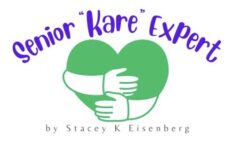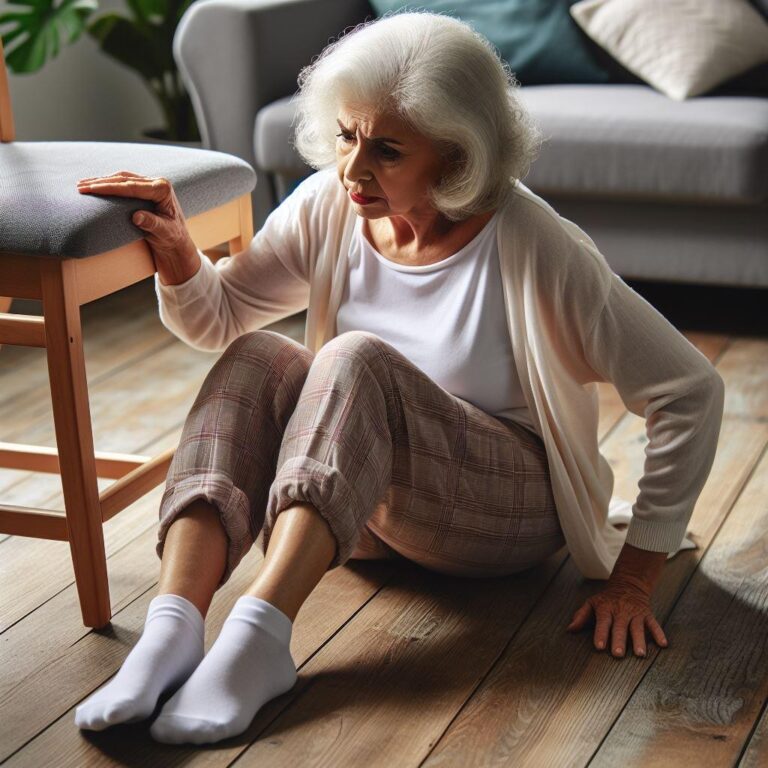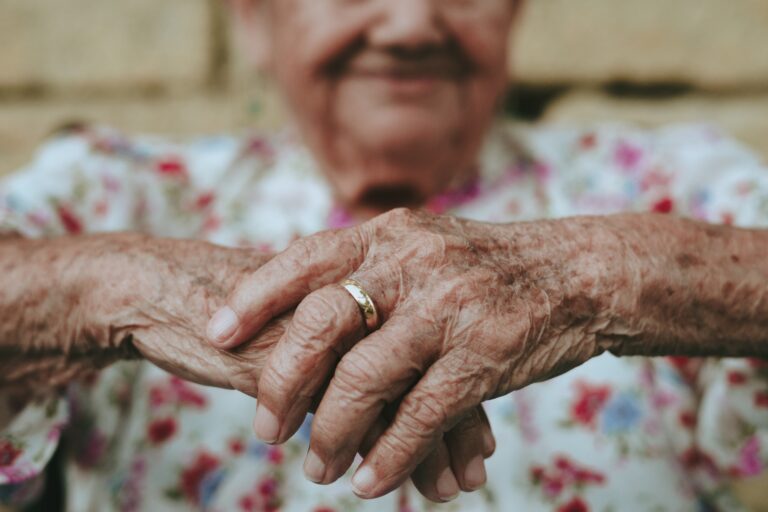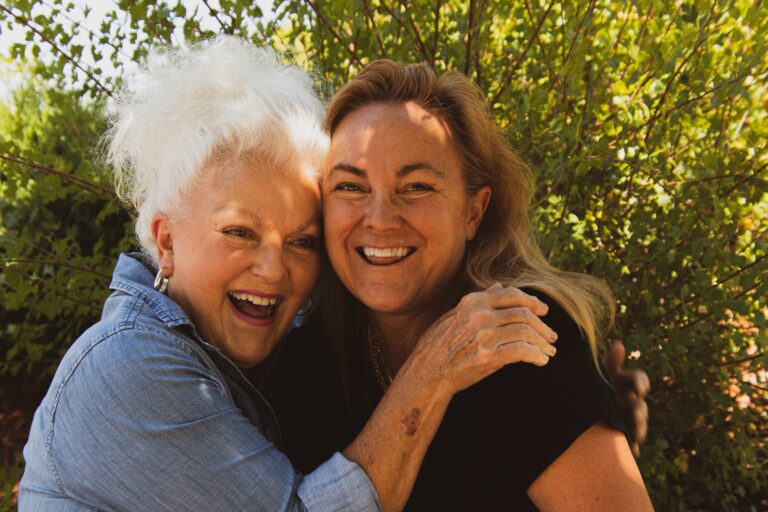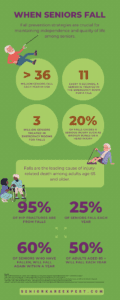 I hear this from clients so often. Their senior loved one had a fall a while back and since then they continue to have falls. Many people feel ashamed or that they are a bother if they continue to call the fire department or EMS after each fall. Falls do seem to come in waves, so when a recent client shared with me that she found a great solution for her and her dad to deal with falls, I thought it would be worthwhile sharing some thoughts on how to safely assist a senior who is a fall risk. I highly encourage you to call for assistance if you are not trained in patient lift.
I hear this from clients so often. Their senior loved one had a fall a while back and since then they continue to have falls. Many people feel ashamed or that they are a bother if they continue to call the fire department or EMS after each fall. Falls do seem to come in waves, so when a recent client shared with me that she found a great solution for her and her dad to deal with falls, I thought it would be worthwhile sharing some thoughts on how to safely assist a senior who is a fall risk. I highly encourage you to call for assistance if you are not trained in patient lift.
Though common, falls among seniors are a leading cause of injury, hospital admissions and readmissions for the elderly. Exploring the risk factors associated with falls offers valuable insight into how to prevent them, thus preserving seniors’ independence and quality of life for as long as possible.
Impact of Medical Conditions on Fall Risk
Many medical conditions dramatically increase seniors’ risk of falling. Impaired musculoskeletal function, a byproduct of aging that affects up to half of seniors aged 65 and older, results in weakness and instability. Vision or hearing loss are conditions that impact approximately one-third of adults aged 65 and older and affect spatial awareness and balance. Neurological conditions like Parkinson’s disease and multiple sclerosis, that millions worldwide suffer from, directly impact mobility and coordination.
Medications That Affect Balance or Alertness
Many medications are vital to managing health conditions but also inadvertently increase fall risk. Sedatives, antidepressants and antihypertensives are known to affect balance and alertness. More than 20% of seniors take medications that are known to increase fall risk as a side effect, emphasizing the need for regular medication reviews by health care professionals.
Household Hazards and Senior Fall Risk Awareness
The environment is a significant factor in fall risk, with over half of all falls among the elderly occurring at home. Sliding throw rugs, poor lighting and clutter are significant contributors to these incidents. In fact, removing environmental hazards within the home can reduce the risk of falling by up to 42%. Ensuring homes are well-lit, preventing loose rugs or having them removed, and ensuring walkways are clear are simple yet effective strategies for mitigating these risks.
Inadequate Footwear or Incorrect Use of Assistive Devices
Proper footwear plays a sizable role in fall risk as well. Wearing shoes with poor support or slippery soles increases fall risk. Conversely, wearing shoes with non-slip soles and proper support reduces fall risk by more than 30%. Additionally, assistive devices such as canes and walkers are meant to aid mobility; however, if used incorrectly or improperly fitted, they can increase fall risk. It’s important to ensure that these devices are correctly adjusted, as well as to use them as instructed.
Recognizing the multifactorial nature of fall risks among seniors is an important first step to preventing them. Addressing medical conditions, reviewing medications, removing environmental hazards and ensuring proper footwear and assistive devices are just a few ways in which fall risk can be dramatically reduced. This approach is not only vital for seniors’ physical health, but also their independence and overall wellbeing.
Regular Medical Check-Ups to Manage Health Conditions
Regular medical check-ups play a pivotal role in preventing falls by ensuring early detection and management of health conditions that may increase fall risk. Conditions like osteoporosis, arthritis, heart disease, diabetes, and neurological conditions such as Parkinson’s disease can affect a senior’s mobility, balance, and overall health status. During these check-ups, healthcare providers can assess medications that might contribute to falls due to side effects like dizziness or hypotension. Vision and hearing tests are also crucial, as sensory impairments can significantly increase the risk of falls. Regular assessments allow for adjustments in medication, the introduction of assistive devices, or referrals to specialists like physiotherapists or occupational therapists to address specific needs.
Reducing Falls In Seniors
Home Safety Modifications
Modifying the home environment to make it safer is a practical approach to fall prevention. This includes the installation of grab bars in critical areas such as bathrooms and along staircases to provide support. Securing rugs with non-slip pads or opting for wall-to-wall carpeting can reduce tripping hazards. Ensuring homes are well-lit, especially in hallways, stairs, and bathrooms, can help seniors navigate their homes more safely at night. Removing clutter and ensuring that walkways are clear of obstacles are simple yet effective measures. For homes with stairs, having sturdy railings on both sides and non-slip treads can make a significant difference. In some cases, adapting living spaces so that the senior can live on one level can be beneficial.
Exercise Programs to Improve Strength, Balance, and Flexibility
Engaging in regular exercise tailored to the elderly can significantly reduce the risk of falls by improving muscle strength, balance, and flexibility. Programs like Tai Chi, gentle yoga, and water aerobics are especially beneficial for seniors. These activities not only enhance physical health but also improve confidence in moving safely. Strength training can help maintain bone density, reducing the risk of fractures if a fall occurs. Balance exercises, often integrated into fitness programs for seniors, are crucial for preventing falls by helping seniors maintain stability in various situations. Flexibility exercises contribute to a better range of motion, making it easier for seniors to recover balance if they start to fall.
Implementing these strategies requires a multifaceted approach involving healthcare professionals, caregivers, and the seniors themselves. Encouraging regular health assessments, making practical home modifications, and promoting physical activity are key components of a comprehensive fall prevention program. By addressing the various factors that contribute to falls, it’s possible to significantly reduce their occurrence and the associated health consequences for the elderly population.
Working with a Caregiver: Enhancing Senior Care through Communication, Training, and Preparedness
Communication
Open dialogue about the senior’s needs and preferences: Effective communication between caregivers and seniors is paramount for providing personalized and respectful care. According to a study highlighted by the National Institutes of Health, clear communication about a senior’s needs, preferences, and concerns leads to improved satisfaction with care and better health outcomes. Engaging in open dialogue ensures that care plans are tailored to the individual, respecting their autonomy and acknowledging their right to make decisions about their daily life and care.
Establishing a routine for daily activities and exercises: Consistency and predictability in daily routines can significantly benefit seniors, especially those with cognitive impairments such as dementia. A systematic review published in the International Journal of Nursing Studies found that structured daily routines, including regular times for activities, meals, and exercises, can reduce anxiety, improve sleep patterns, and enhance overall well-being in older adults. Establishing a routine also helps in setting clear expectations and fosters a sense of security and familiarity.
Caregiver’s Fall Risk Training
Safe transfer techniques and proper use of assistive devices:
Proper training in safe transfer techniques and the use of assistive devices is crucial to prevent injuries both to caregivers and seniors. The Centers for Disease Control and Prevention (CDC) emphasizes the importance of caregivers being trained in ergonomics, to safely assist seniors in moving, thereby reducing the risk of falls and related injuries. Knowledge of and proficiency in using assistive devices like walkers, wheelchairs, and transfer boards are essential skills that facilitate safe mobility and independence.
Recognizing signs of distress or discomfort in the senior:
Early recognition of signs of distress or discomfort in seniors can prevent complications and improve the quality of care. Training caregivers to identify subtle changes in behavior, appearance, or communication that may indicate pain, discomfort, or the onset of a health issue is key. A study in the Journal of Pain and Symptom Management underscores the importance of caregiver training in palliative care settings, highlighting the role of observation skills in detecting and addressing distress signs effectively.
How to Prepare for a Senior Fall Emergency
Training on when and how to call for help:
Preparedness for emergencies is a critical component of caregiving. Caregivers should be trained on recognizing signs of medical emergencies, understanding when to seek immediate medical attention, and knowing how to provide first aid if necessary. The American Red Cross offers courses that equip caregivers with the knowledge and skills to respond effectively in emergencies, ensuring they can act swiftly and appropriately to protect the health and safety of seniors in their care.
Keeping emergency numbers and medical information easily accessible:
It is essential to have all emergency contacts and medical information readily available. This includes phone numbers for emergency services, healthcare providers, and family members, as well as detailed medical histories, medication lists, and any advance directives. The National Council on Aging recommends creating an emergency plan that includes this information, ensuring it is easily accessible to caregivers. This preparation allows for quick and informed responses in critical situations, potentially saving lives.
Enhancing caregiving through effective communication, comprehensive training, and thorough emergency preparedness can significantly improve the care and well-being of seniors. By fostering open dialogue, ensuring caregivers are well-trained in practical skills, and preparing for emergencies, we can create a safer and more supportive environment for our aging population.
Recognizing When to Call Emergency Services After a Fall
In Case of a Fall with Injury or Inability to Get Up
Risk is high for seniors falling and oftentimes an escalation in serious injuries. If someone falls and is injured or unable to get up by themselves, it’s imperative to call for help right away. Additional signs that a fall could be serious include visible injuries, complaints of pain (especially in the hip, head, or back), and inability to move or stand.
Signs of a Stroke, Heart Attack, or Other Medical Emergencies
Knowing the signs of major medical emergencies like strokes and heart attacks can save lives. The acronym “FAST” serves as a simple way to remember stroke symptoms: Face drooping, Arm weakness, Speech difficulties, Time to call emergency services. Heart attack symptoms can include chest pain, as well as discomfort in other areas of the upper body, shortness of breath, and other signs such as cold sweat, nausea, or lightheadedness. Of course, many other medical emergencies don’t fit these profiles but are just as, if not more, urgent: severe, sudden pain; difficulty breathing; or significant bleeding.
How to Call When a Senior Falls
Providing Clear Information to Dispatchers
When you’re on the phone with emergency services, speak slowly and clearly. Communicate what you know is most essential: “My mother has fallen. She’s cut her head and is bleeding.”
Dispatchers will usually begin giving you instructions while help is on the way. Apply pressure to a wound, don’t move someone who’s fallen or start CPR are just a few of the possible scenarios. Try to remain calm, say veteran dispatchers; it will help you, the person you’re caring for, and them.
Listen very carefully to dispatchers, and be prepared to give them any information they ask for. “Your questions don’t mean we’re not doing something,” Sanislo says. “I may be asking them about medical history as I’m dispatching [an ambulance] out.”
How to Evaluate A Senior After a Fall
Evaluating a Senior After a Fall
After a senior experiences a fall, it’s crucial to carefully and cautiously evaluate the situation before attempting to provide help. Approach the senior and follow these guidelines to ensure the safety of both the caregiver and the senior.
Avoid Rushing to Move the Senior
Moving a senior immediately following a fall can make potential injuries worse, particularly if fractures or spinal injuries are involved. According to the American Academy of Orthopaedic Surgeons, falls are the leading cause of both fatal and nonfatal injuries among older adults. Failing to carefully assess a senior’s post-fall condition before attempting to move them carries a high risk of complications.
Conduct a Verbal Assessment for Pain or Discomfort
Before attempting any physical assessment or movement, talk to the senior. Ask how much pain they are in, whether they think they can move, and the location of any pain. This information is critical for understanding the likely severity of the fall. The Centers for Disease Control and Prevention’s (CDC) STEADI (Stopping Elderly Accidents, Deaths & Injuries) initiative stresses the importance of looking for evidence of serious injury and understanding the circumstances and mechanism of the fall.
Assessment for Injuries
Looking for Visible Injuries Without Moving the Senior
Without moving the senior, visually inspect their body for signs of injury. Examples include bruises, bleeding, and deformities. Visible injuries often provide first clues about problems such as fractures or severe bruises. Monitoring a senior for signs of distress and serious injuries, without moving them, is among the CDC’s post-fall evaluation recommendations.
Asking About Pain Location and Severity
Learning more about the location and intensity of pain can help in understanding the injuries that may have occurred. Ask the senior to describe their pain and to rate it on a scale of 1 to 10. This information is very useful to health professionals in deciding the next steps in care, such as whether to use X-rays or MRIs for further diagnosis. Assessing for pain and discomfort is consistent with the major goals of palliative care, which is the comfort and relief of symptoms and improvement of the quality of life for people with serious injuries.
Further Steps After a Fall
Lifting and moving a senior is one of the most dangerous tasks a caregiver may have to undertake. However, with the correct techniques and an eye toward the proper safety precautions, caregivers and family members can ensure that they and their loved ones stay safe and free from injury.
After the Initial Assessment:
If the senior is able to safely move and there are signs that their injuries are minor, help them to a comfortable position and continue to evaluate the situation. At any sign of doubt or for continued significant pain or immediate sensitivities such as back, neck, or head pain, seek medical attention immediately. Even without an injury that is readily visible, it is best to seek medical evaluation to rule out internal injuries or conditions.
Completing an evaluation of a senior who has fallen successfully requires a deliberately-cautious and methodical approach to ensure their safety and protection. By following these steps and consulting with professional medical personnel when called for, caregivers and family members can help free themselves from the grips of fear associated with an elderly person falling. It’s true that falls can be difficult for a senior’s health, but with the right action, the risk of serious injury can be minimized.
Safe Lifting Practices:
Any time a senior requires assistance, lifting and moving them may be necessary, and it comes with a variety of dangers. It’s important to know not only what not to do, but also what you should do in order to keep your loved one safe and ensure that you don’t injure yourself. Let’s take a closer look at some safe lifting practices of which to be mindful.
What Not to Do When Trying to Lift:
- Do not lift if you are not trained to do so: Lifting without proper training could lead you to use improper lifting techniques, which may result in injury. Obtain training or assistance when you need to lift.
- Never bend from the waist; keep your back straight and your knees bent: When you bend from your waist, you place a large amount of pressure on your lower back, which could end up straining or injuring it. Instead, bend your knees and make sure to keep your back as straight as possible, so you can use the power of your leg muscles to enable you to lift; they are stronger and less prone to injury.
Why You Shouldn’t Lift Without the Proper Tools:
Whether the senior is in a hospital bed, a standard bed, a chair, or a wheelchair, there are lifting devices available to help caregivers transfer seniors without body strain. Improper lifting is an overwhelming risk not only for the senior, who could sustain injuries such as strains or worse in the event of a fall, but also for you, the caregiver. The efficiency and likelihood of falls increase when trying to lift without the assistance of these devices and because you have little to no grip in some instances, or the senior’s stability is less than perfect when trying to transfer.
Using Proper Tools and Techniques:
Utilizing lifting devices such as transfer belts or mechanical lifts will ease the difficulty and provide more safety for both you and the senior. Many of these devices are designed to bear the weight of your senior with ease, removing the bulk of the weight from you and reducing strain. They also help seniors to feel more secure while transferring. Transfer belts serve as a manual lifting device, while mechanical lifts provide safe and secure assistance with the heavy lifting, doing the work for you most of the time. These modern devices depend on more than just caregiver brawn for assistance, easing physical strain on caregivers and allowing for safer and more effective care. Properly trained homecare agencies should always supply these devices for their clients so that you can do your job safely and effectively. My incredibly resourceful client shared the patient lift she found on Amazon for around $400, or you can also check out the IndeeLift patient lift device.
Following safe lifting protocols is indicated during the transfer process: always assess prior to lifting, ensure that you use the proper posture and techniques, and never rush. A little common sense can go a long way. Safe lifting has little to do with the ability of the caregiver or the senior. Proper safety and lifting protocol should be the most important lesson for thoroughly trained caregivers, since all caregivers must be able to transfer their clients daily. Following these safety protocols is critical to support safety and health for both you and the senior. Always be sure the homecare agency you have a contract with properly trains you before allowing you to go to a job.
Caregiving is both a rewarding and often difficult responsibility, particularly when lifting is involved. By avoiding common mistakes and utilizing the proper tools and protocols, you can ensure that you provide the best care possible and also maintain your own health and safety.
Additional Considerations in Senior Care
Changing the Care Plan to Address Changing Needs of Seniors
Seniors’ needs can change over time due to changes in their health status, mobility, or cognitive functioning. Changing and updating the care plan guarantees that the care provided fits their current needs. This proactive approach can help avoid complications and maintain or improve the quality of life for the senior. This involves reassessing medical needs, activities of daily living, and emotional support to ensure that the care plan continues to meet the needs of the senior and is still effective.
Utilizing Feedback from the Senior and Healthcare Professionals
Feedback from the seniors, and from their healthcare professionals, will be an important part in tailoring the care plan to meet their needs. Seniors can provide insights into their preferences and comfort with the care that they are receiving, and healthcare professionals can convey expert advice on necessary adjustments stemming from medical assessments. Utilizing this will foster more of a person-centered care approach, promoting dignity, autonomy, and satisfaction.

From a young age, Stacey’s link to the senior care industry grew alongside her mother’s work at a nursing home, where she often accompanied her. By her early teens, she secured her first official job at a nursing home, laying the foundation for a profound journey in senior care spanning over four decades. Her roles varied from opening assisted living and memory care residences to working in nursing homes and independent senior living communities. As the former Director of Fun for 300 independent seniors, she expertly organized daily events and trips. Stacey’s unwavering passion, nurtured by her family, and professional dedication as a recreation therapist, reflect her deep commitment to preserving the dignity and well-being of seniors.
Stacey’s senior care expertise has been recognized by the media including U.S. News and World Report and Care.com.
Stacey and her husband Bryan are the owners of the senior in-home care agency A Place At Home – North Austin.
